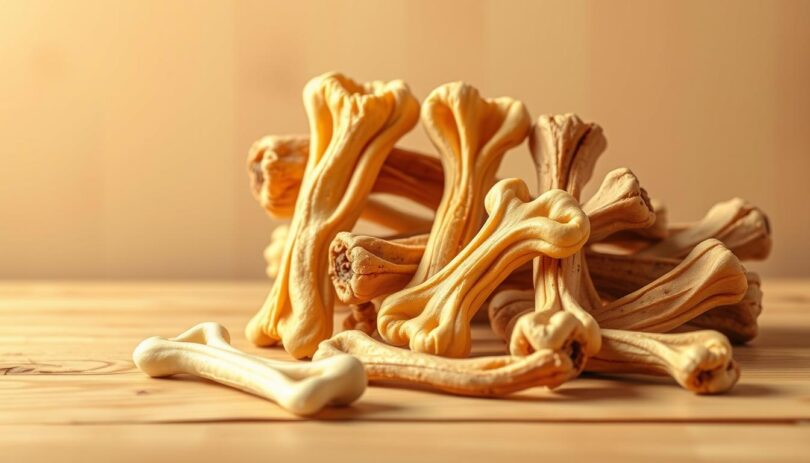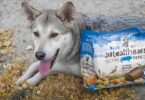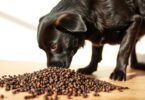Why do millions of pet owners rely on rawhide chews for their dogs, even as debates about safety persist? This centuries-old solution for canine chewing needs has stood the test of time, yet modern concerns demand a closer look at its role in pet health.
Made from the inner layer of cattle hides, these durable chews offer a natural outlet for dogs’ instinctive gnawing behaviors. Unlike synthetic alternatives, they break down slowly, keeping pets engaged while supporting dental hygiene. Their affordability and widespread availability make them a staple in households nationwide.
But not all chews are created equal. From sourcing differences to processing methods, understanding what goes into rawhide products helps owners make safer choices. For those exploring safe chewing alternatives, comparing options becomes essential.
This guide unpacks the realities behind rawhide’s popularity, examines its pros and cons, and provides actionable insights for matching chews to your dog’s size and habits. Discover how to balance tradition with modern pet wellness standards while keeping tails wagging.
Exploring What is Rawhide and Its Origins
Animal hides have played unexpected roles beyond leather goods for thousands of years. The pet industry’s adaptation of these materials created durable chews that satisfy dogs’ natural urges while supporting dental health through controlled gnawing.
Defining Rawhide and Its Traditional Uses
Rawhide consists of the fibrous inner layer of cattle or horse hides, stripped of hair and fat through specialized processing. Unlike tanned leather, these products remain pliable when chewed, slowly breaking down as dogs work through them.
Historical records show hides were repurposed for tools, clothing, and shelter long before becoming pet items. Modern manufacturing techniques transformed this byproduct into digestible chews, though some traditional methods like salt preservation remain central to production.
The Process from Animal Hide to Dog Chew
Processing begins at slaughterhouses where hides get salted to prevent decay. After months in storage, tanneries use lime solutions to dissolve residual fat before mechanical scrubbing removes hair. Multiple chemical baths follow, sometimes involving bleach for sterilization.
Most rawhide production occurs in Chinese facilities, where brined hides undergo weeks of treatment before drying into final shapes. This global supply chain creates challenges in tracking safety risks and alternatives, making sourcing transparency vital for concerned owners.
The Benefits of Rawhide for Dogs
Canine companions thrive when their natural instincts meet practical solutions. High-quality chews offer dual advantages: maintaining oral wellness and addressing behavioral needs through instinct-driven activities.
Supporting Dental Health and Plaque Removal
Abrasive textures act like nature’s toothbrushes during gnawing sessions. As dogs work through chews, the friction scrapes away soft plaque before it hardens into tartar. This mechanical action massages gums, improving circulation and reducing periodontal disease risks.
While not a substitute for vet cleanings, regular chewing complements brushing routines. Owners often notice fresher breath and cleaner teeth over time. Always match chew size to your pet’s jaw strength for optimal results.
Encouraging Natural Chewing and Stress Relief
Gnawing releases endorphins that calm anxious pets. Long-lasting options keep energetic dogs occupied for hours, channeling their energy constructively. This prevents boredom-driven destruction of household items like shoes or furniture.
For pets with intense chewing habits, rotating between rawhide and alternatives like pork bones (when properly supervised) adds variety. Recognizing your dog’s satisfied focus during chew time signals a successful behavioral outlet.
Assessing Risks and Safety Considerations
While rawhide chews offer benefits, responsible owners must weigh potential dangers. Understanding common hazards helps create safer chewing experiences tailored to your pet’s needs.
Choking Hazards and Digestive Concerns
Aggressive chewers often break rawhide into sharp fragments. These pieces can lodge in throats or intestines, requiring emergency vet visits. Smaller dogs face higher risks due to narrower airways and digestive tracts.
Undigested chunks may clump together, causing blockages. Watch for vomiting, lethargy, or loss of appetite—these signal urgent medical needs. Always supervise chewing sessions and discard softened remnants promptly.
Chemical Contaminants and Quality Control Measures
Some manufacturers use bleach or hydrogen peroxide to whiten chews. These chemicals linger in finished products, potentially causing allergic reactions or long-term health issues. Storage errors can also introduce bacteria like Salmonella, especially in humid environments.
Choose brands that disclose processing methods and avoid products with artificial dyes. For dogs with sensitive stomachs, consider raw poultry products as alternative protein sources under veterinary guidance.
Exploring What is Rawhide: A Closer Look at Safety and Quality
Navigating the rawhide aisle requires more than grabbing the first bag you see. Premium options differ dramatically from bargain-bin chews in sourcing, processing, and safety controls. Savvy owners prioritize transparency over price tags when selecting products for their pets.
Understanding Variations in Rawhide Products
Top-tier rawhide chews list single-protein sources like USA-sourced beef. Avoid vague terms like “animal by-products” or artificial additives. Reputable brands disclose manufacturing locations, with American and European facilities often adhering to stricter safety protocols.
Thicker chews suit powerful chewers, while smaller breeds need appropriately sized pieces. Check labels for certifications like USDA approval or non-GMO verification. These markers indicate rigorous quality checks during production.
Guidelines for Safe Chewing and Product Selection
Match chew size to your dog’s weight and jaw strength. A Great Dane needs extra-large chews, while a Chihuahua requires petite options. Supervise sessions, removing softened pieces that could break into choking hazards.
Rotate chews weekly to maintain freshness and interest. Store unused products in airtight containers to prevent bacterial growth. Discard any chews showing mold, discoloration, or unusual odors immediately.
Wrapping Up Your Rawhide Choices for a Healthier Dog
Choosing the right chew for your dog balances safety with satisfaction. Bully sticks, lamb ears, and fish skins offer protein-rich alternatives to traditional options. Vegetable-based chews like dehydrated sweet potatoes provide digestible crunch, while rubber toys withstand aggressive gnawing.
Rotate between different textures to maintain engagement. Dental bones clean teeth during play, and Kong toys stuffed with treats challenge mental agility. Always match chew hardness to your pet’s jaw strength to prevent tooth damage.
Consult your veterinarian before introducing new items, especially for dogs with food sensitivities. Gradually phase out old chews while monitoring digestion and interest levels. Supervision remains crucial—remove small fragments immediately to avoid choking risks.
Quality alternatives let owners prioritize wellness without sacrificing enjoyment. By understanding your dog’s unique needs and chewing habits, you can build a safe, stimulating routine. Trustworthy brands and vet-approved selections create peace of mind for every play session.
FAQ
How does rawhide improve dental health?
Chewing rawhide helps scrape away plaque and tartar through mechanical friction, promoting healthier gums and fresher breath. Look for veterinary-approved options like Greenies Dental Treats or Purina DentaLife, which combine texture and enzymes for enhanced oral care.
What are the main risks of giving dogs rawhide?
Choking hazards, digestive obstructions, and exposure to chemical residues like bleach or formaldehyde during processing are primary concerns. Opt for minimally processed, USA-sourced products such as Earth Animal No-Hide Chews to reduce these risks.
Are rawhide chews safe for all dogs?
Rawhide safety depends on a dog’s chewing style, size, and digestive sensitivity. Aggressive chewers may risk choking or intestinal blockages, while dogs with sensitive stomachs might struggle to digest large pieces. Always supervise chewing sessions and choose size-appropriate products from trusted brands like Whimzees or Bully Sticks.










Leave a Comment